We are proud to have the 2021 edition of the SPE Annual Technical Conference and Exhibition (ATCE) return to Dubai for the second time at the Dubai World Trade Centre, a world-class convention venue located in the heart of this modern vibrant city. The event will embrace the conference's heritage of excellence, drawing on the expertise of leading international oil and gas professionals.
To continue Penn State’s commitment toward a sustainable future, University leaders are working with the University Park Undergraduate Association (UPUA) and various student organizations to educate the Penn State community and update student leaders on Penn State’s overarching actions toward sustainability and its energy-related investment strategies.
A new, environmentally friendly, single-step process has been developed to convert carbon dioxide into higher hydrocarbons using plasma, according to scientists and engineers.
The following is a list of academic promotions for tenured and tenure-line faculty members at Penn State, effective July 1.
Computed tomography — CT scanning — which combines a series of X-ray images taken from different angles around an organism and uses computer processing to create cross-sectional images of its bones, is providing new insight into an old initiative to characterize fishes in Africa’s Lake Malawi.
Penn State seed grant leads to NSF funding to study stress wave mitigation
Seismic waves make the Earth quake, shaking the developments on the planet’s surface. But what if there were a way to stop those seismic waves from reaching buildings, bridges, or entire towns? What if the energy from the waves could potentially be redirected or even harnessed, just by building a structure on the ground? Parisa Shokouhi, associate professor of engineering science and mechanics and acoustics at Penn State, is interested in the possibility of controlling this type of stress wave. Known as surface waves, they move along the border between two differing media; a common example is an ocean wave moving along the boundary between water and air. Shokouhi’s interest motivated her to pursue a Penn State Multidisciplinary Seed Grant in 2017, which served as the first step toward an external grant. Now, with a $641,162 National Science Foundation grant, Shokouhi is exploring the possibilities of surface wave control using an array of resonating elements collectively called a metasurface that could redirect waves in the material it is attached to.
College of Engineering awards five Multidisciplinary Research Seed Grants
The Penn State College of Engineering awarded 2020 Multidisciplinary Research Seed Grants to five faculty research teams across the College of Engineering, the College of Medicine, and the College of Earth and Mineral Sciences. The Multidisciplinary Research Seed Grants support research projects that will increase the competitiveness of faculty in attracting high-impact multidisciplinary and centerlevel research funding from the state and federal government, industry, or foundations. These seed grants will support the awardees’ projects for one year. Parisa Shokouhi, associate professor of engineering science and mechanics, and Daniel Kifer, associate professor of computer science, were awarded a grant for “A wave physics-informed deep learning framework for acoustic data.” They will develop a framework to integrate complex wave physics into machine learning prediction models that use acoustic sensory data, such as systems used for geophysical surveys, non-destructive evaluations, and medical diagnostics.
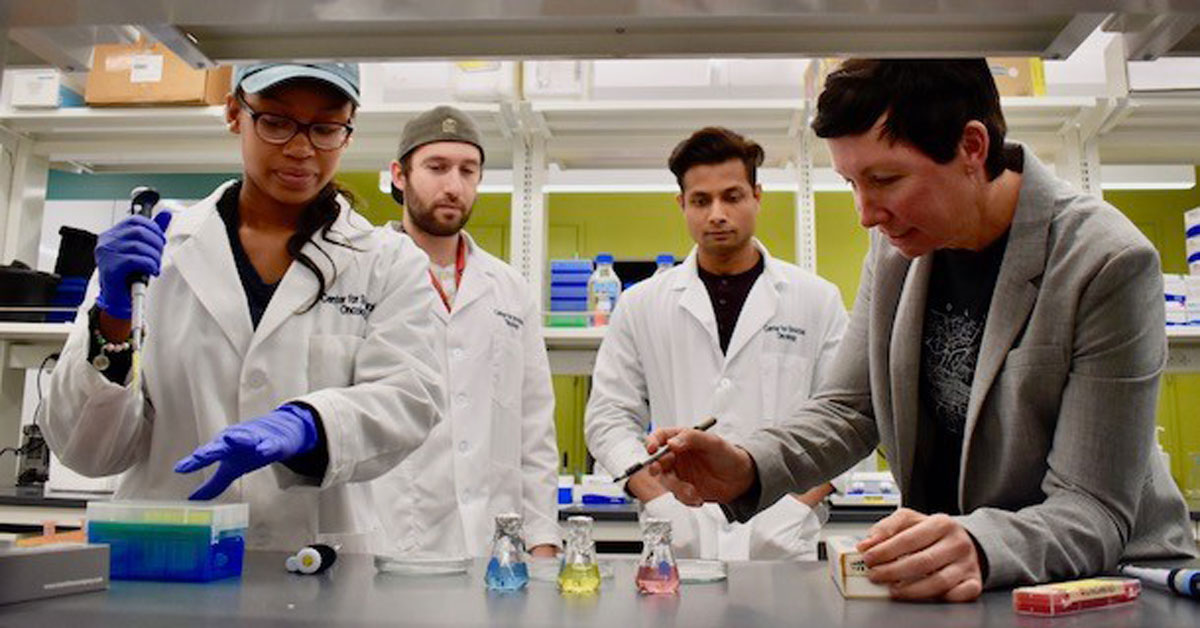
Deborah Kelly, far right, reviews lab results with students (left to right) Madison Evans, Michael Casasanta, and G.M. Jonaid.
Photo taken September 2019. Image: Jamie Oberdick
Jump-starting COVID-19 ravaged lungs with newly modified therapeutics
Deborah Kelly, Lloyd & Dottie Foehr Huck Chair in Molecular Biophysics and professor of biomedical engineering, and James Adair, professor of materials science and engineering, biomedical engineering, and pharmacology, are partnering with researchers from the College of Medicine to re-engineer a cancer drug for COVID-19 patients. The team is researching potential viral applications of a protein therapeutic known to be effective at decreasing lung inflammation in cancer patients. The research is one of the projects funded by the Huck Institutes of the Life Sciences coronavirus seed grant initiative.
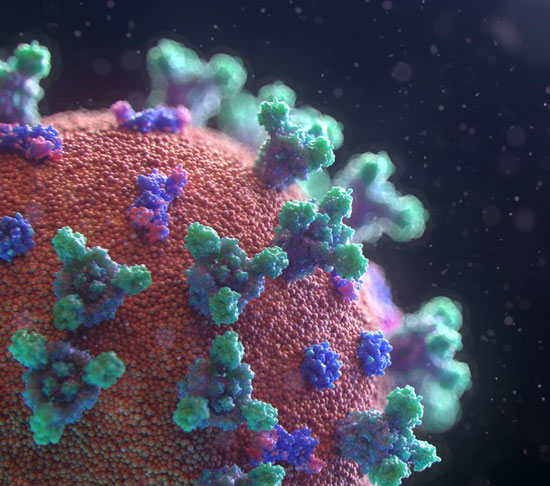
Image: Fusion Medical Animation, Unsplash
IST seed grants support tech projects related to COVID-19
The College of Information Sciences and Technology recently announced six projects that will receive funding from the college’s seed grant program. Each project will take different approaches to tackle various challenges and needs related to the novel coronavirus pandemic. The college’s seed grant program is designed to jump-start critical research projects that explore innovative ideas that have a shortterm impact, as well as those that will position researchers to support, advance, and develop long-term solutions to local and global issues. EI’s Sharon Huang, associate professor, received funding for her project titled “AI Methods and Tools in Response to the COVID-19 Open Research Dataset.” This project aims to rapidly develop artificial intelligence methods and tools in response to the COVID-19 Open Research Dataset, using natural language processing, text mining, image mining, and other AI techniques to generate new insights related to COVID-19 for policy makers and medical experts.
Penn State and University of Auckland announce 2020 joint collaboration projects
In late 2019, Penn State and the University of Auckland launched the Joint Collaboration Development Program, a jointly financed seed-fund program with the aim to foster collaborative research and educational projects. The Office of Global Programs has announced that eight projects have been funded and commenced in June 2020. Grant recipients will have the opportunity to help shape the direction and future investment in the university collaboration at the level of an institutional partnership and contribute to the universities’ vision and strategic goals. Among those awarded was Meng Wang, for her project titled "Re-Engineering Anaerobic Treatment Processes for Novel Functionalities."
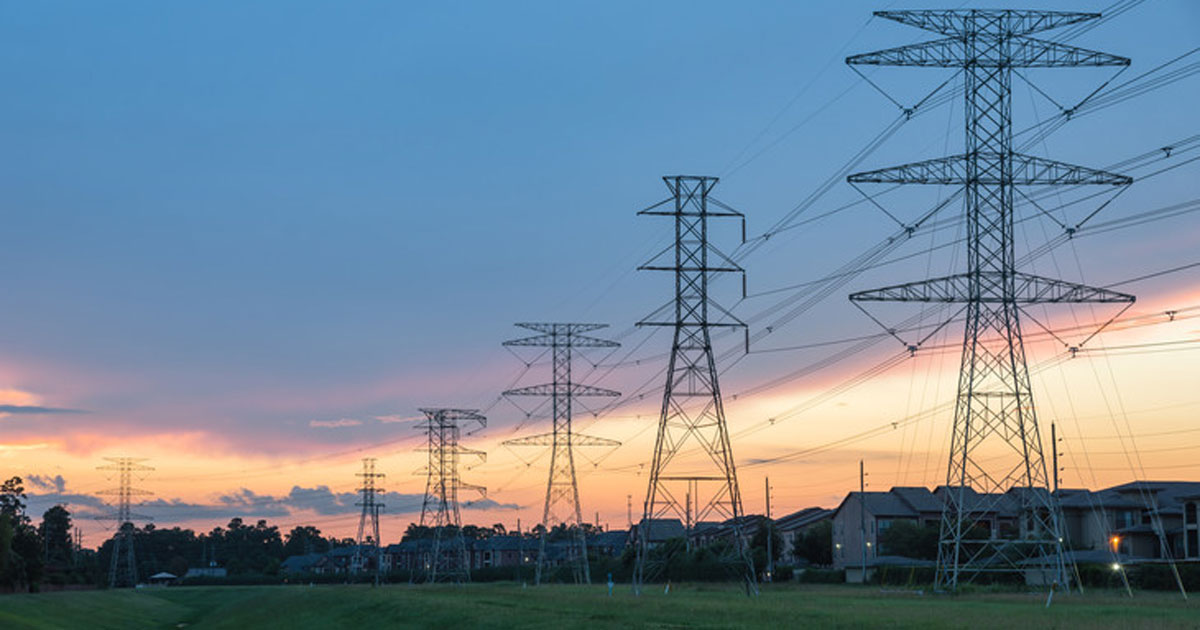
Seth Blumsack is a part of a multi-university team that is studying the decision-making process that governs how people in the U.S. receive electricity.
Image: Adobe Stock
Shedding light on the rules that govern the U.S. power grid
A Penn State researcher is a part of a multi-university team that received a $513,000 grant to study the decision-making process that governs how people in the U.S. receive electricity. Seth Blumsack, professor in the College of Earth and Mineral Sciences and director of the Center for Energy Law and Policy, is co-leading an interdisciplinary team investigating how the rules for the power grid are made and how they affect the real world.
“Electricity is the platform for our economy and is tightly connected to people’s well-being,” said Blumsack, a cofunded faculty member in the Institutes of Energy and the Environment, who has been studying the electric power industry for more than twenty years. “These rules that govern the grid are critical elements for changing the way we produce electricity.”
According to Blumsack, the rules have important implications for the grid and society, such as grid reliability, cost to customers, environmental impact, and technology.
Lo Prete receives NSF CAREER award to investigate capacity adequacy options
Chiara Lo Prete, associate professor of energy economics, received a Faculty Early Career Development Program (CAREER) award from the National Science Foundation to investigate electricity market structures to provide efficient incentives for generation capacity investment under increasing renewable penetration. Organized wholesale electricity markets in the United States converged to a common market design framework that has been successful at promoting efficient and reliable operations of electric power systems since the 1990s. However, the growth of intermittent renewables poses challenges that were unknown, or less material, in the early design efforts. Lo Prete’s group will examine market design challenges associated with increasing renewable penetration using an approach that combines optimization and experimental economic methods.
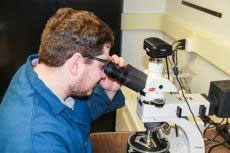
Nathan Gendrue, graduate student in mining and mineral process engineering who is advised by Shimin Liu, reviews the characterization of coal dust under a high-resolution microscope.
Image: Penn State
CDC grant to focus on effects of nano-coal dust on lung disease in coal miners
Penn State researchers in the John and Willie Leone Family Department of Energy and Mineral Engineering received a $400,000 grant from the Centers for Disease Control and Prevention’s National Institute for Occupational Safety and Health to research coal dust in underground mines and its effect on lung disease in miners.
Inhaling coal mine dust is a major occupational hazard for coal miners and is known to cause several types of respiratory diseases, with coal worker’s pneumoconiosis (CWP), often called black lung, the most common. The increase in CWP in certain areas of the country points to the need for further research into the cause of this increase. This research will characterize physical, compositional, and petrophysical properties of coal dusts and investigate the biological effects of nano-coal dust on lung cell and tissue using a lung-on-a-chip device.
Institute for Computational and Data Sciences awards computational and data sciences seed grants
Understanding polarized political opinions, predicting Arctic Sea ice levels, and accelerating quantum computing with machine learning—these are just a few focuses of the dozens of new Penn State research projects that have been funded by Institute for Computational and Data Sciences seed grants, in conjunction with supplemental funding from the colleges of Arts and Architecture, Earth and Mineral Sciences; Information Sciences and Technology; Education; and Engineering. Of the fifty-one proposals received, thirty-two projects were funded. Among those, Arash Dahi Taleghani, associate professor of petroleum and natural gas engineering, received funding for his proposal titled “Artificial Intelligence Method for Fast and Reliable Interpretation of DFIT and Flowback Data.” Sharon Huang, associate professor of information sciences and technology, also received funding for her proposal titled “Towards Dynamic Patient-centric Personal Health Libraries.” Tieyuan Zhu, assistant professor of geosciences, received funding for his proposal titled “Machine Learning of Massive Real-time Environmental Monitoring Data from Penn State Fiber-optic Array for Mitigating Urban Geohazards.”
Penn State faculty teams awarded seed grants for AI research
Multi-Disciplinary Research Grants were recently awarded to eight research groups from across Penn State’s colleges and campuses conducting research related to artificial intelligence (AI) and machine learning (ML). In collaboration with numerous research institutes and colleges, these grants are funded in concert with the 2020 industryXchange, an annual University-wide event hosted by the College of Engineering. These one-year seed grants will support research on application-specific development in AI and ML in the areas of cybersecurity, energy, health care, manufacturing, and transportation. Among them were Jinchao Xu, Verne M. Willaman Professor of Science, and John Yilin Wang, associate professor of petroleum and natural gas engineering, for their project titled “Advanced and Fast Simulation Technologies for Modeling Shale Gas Wells.”
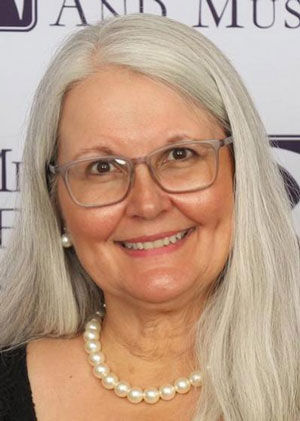
Image: Courtesy Barbara Arnold
Mining engineering professor selected as honorary member of AIME
Barbara Arnold, professor of practice in mining engineering, has been awarded honorary membership in American Institute of Mining, Metallurgical, and Petroleum Engineers (AIME). AIME honorary membership is one of the highest honors that the institute can bestow on an individual. Honorary membership is awarded in appreciation of outstanding service to the institute or in recognition of distinguished scientific or engineering achievement in the fields embracing the activities of AIME and its member societies.
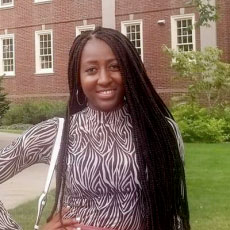 2020 Millennium Café Pitch Competition winner
2020 Millennium Café Pitch Competition winner
The 2020 Millennium Café Pitch Competition was held virtually on June 2, 2020. Sponsored by PPG Industries, the Millennium Café Pitch Competition is an opportunity for graduate students to pitch research in two minutes or less using no more than four supporting slides. Sandra Ike won first place for her presentation titled "Creating Graphitic Carbons from Biopolymers."
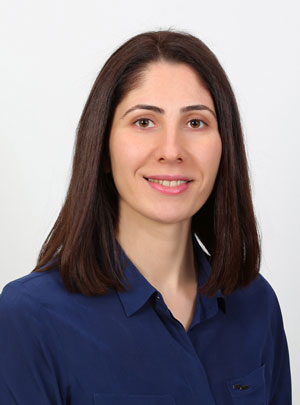 EI faculty member joins the Institutes of Energy and the Environment
EI faculty member joins the Institutes of Energy and the Environment
Hilal Ezgi Toraman, an assistant professor in the College of Earth and Mineral Sciences with a joint appointment in the College of Engineering, has become a cofunded faculty member in the Institutes of Energy and the Environment (IEE). Toraman’s research interests include chemical reaction engineering with a focus on developing new processes, materials, and technologies for efficient and sustainable use of shale gas, biogas, biomass, and plastic waste. Her research is in line with the Stewarding Our Planet’s Resources thematic area of Penn State’s strategic plan. Toraman was also recently named the Virginia S. and Philip L. Walker Jr. Faculty Fellow in Materials Science and Engineering and Fuel Science Program at Penn State.
Penn State, Colorado School of Mines will support U.S. need for critical minerals
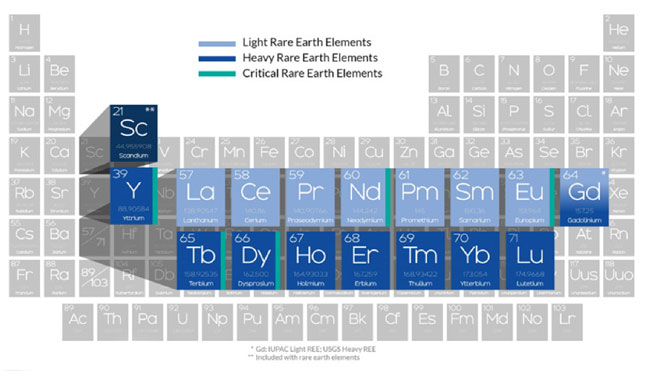
Periodic table showing the seventeen rare earth elements that are part of the group of critical minerals significant to domestic and national security, energy and daily consumer products.
Image: U.S. Department of Energy
Penn State has entered a memorandum of understanding (MOU) with the Colorado School of Mines to establish a collaboration designed to be responsive in supporting the United States’ need for critical minerals. Through the MOU, the two universities will partner on research to support U.S. producers and consumers of critical mineral commodities and help advance the country’s manufacturing sector while developing a well-trained workforce to meet the demands on U.S.-sourced critical minerals.
“Both schools are committed to developing new innovations to enable a complete U.S. capability for critical minerals, from basic science to supply chain through to production,” said Lora Weiss, Penn State’s senior vice president for research. “Together we span from Appalachia to the Rockies and collectively we have the technical base and established relationships with stakeholders to realize the full potential value of our natural resources. Our combined team is well positioned to be extremely responsive to the country’s critical minerals needs.”
Rezaee named outstanding young engineer
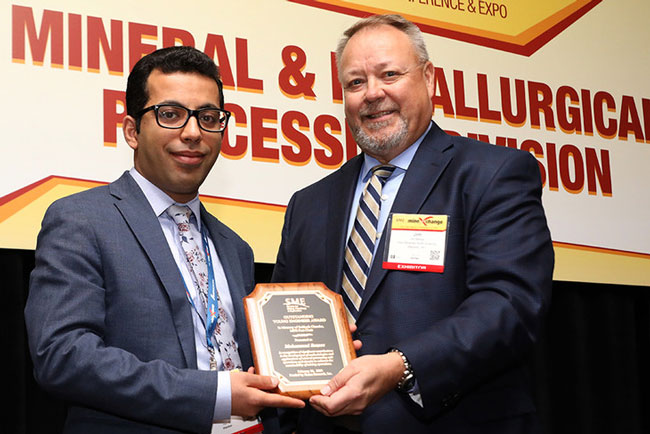
Image: Courtesy Mohammad Rezaeee
Mohammad Rezaee, assistant professor of mining engineering in the John and Willie Leone Family Department of Energy and Mineral Engineering, has been awarded the Outstanding Young Engineer Award from the Society for Mining, Metallurgy, & Exploration’s (SME) Mineral and Metallurgical Processing Division. The Outstanding Young Engineer award was created in 1984 and recognizes a young individual, age thirty-six or younger, with a significant contribution within the mineral processing and extractive metallurgy discipline. Rezaee, who holds the Thomas V. and Jean C. Falkie Mining Engineering Faculty Fellowship in the College of Earth and Mineral Sciences, was selected for “his significant contributions in the development of methodologies and applications of mineral processing unit operations and circuits to enhance the sustainability of mining operations.” He received the award at the SME 2020 annual Conference & Expo held in Phoenix, Feb. 23-26, 2020.
Energy, chemical engineering professor receives fellowship
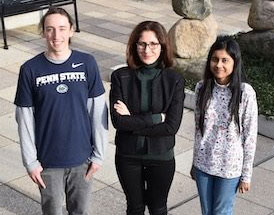
Image: Jamie Oberdick
Hilal Ezgi Toraman, assistant professor of energy engineering and chemical engineering, has been named the Virginia S. and Philip L. Walker Jr. Faculty Fellow in Materials Science and Engineering and Fuel Science Program. The fellowship was awarded to Toraman for her contributions to teaching, research, and service in the John and Willie Leone Family Department of Energy and Mineral Engineering.
“I want to convey my sincere thanks to Virginia and Phillip Walker for supporting me as a researcher in the field of fuel science,” Toraman said. “The Virginia S. and Philip L. Walker Jr. Faculty Fellowship is not only a source of funding to further my contribution in teaching, research, and public service but also a great source of motivation.”
Interdisciplinary team wins Department of Energy Optimization Challenge
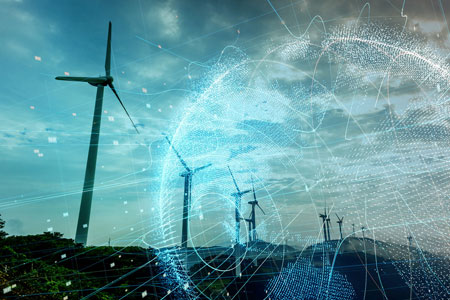
Image: © iStock Images / Metamorworks
A team of Penn State researchers is part of the first round of winners for the Department of Energy’s (DOE) Grid Optimization Competition. Presented by the DOE’s Advanced Research Projects Agency-Energy, the selective competition presents challenges for the development of optimization algorithms for a crucial set of operational problems faced by the United States’ power grid. The team, led by Uday V. Shanbhag, the Gary and Sheila Bello Chair and professor in the Harold and Inge Marcus Department of Industrial and Manufacturing Engineering in the College of Engineering, received $100,000 to advance their methods and share their technology with industry partners. Future competitions, beginning with challenge two, will build on the models used in challenge one, but may include complicating factors such as solving larger network models, optimizing power flows over both transmission and distribution systems, contending with uncertainty and discreteness, leveraging power flow control devices, and increasing model detail. Challenge two will likely continue its focus on optimal power flow and disburse fewer, but larger, awards.
EMS Energy Institute Awards by Source
(Fiscal Year 2019/2020)
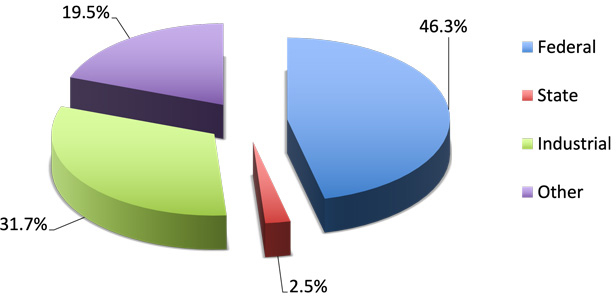
Total Awards 41
EMS Energy Institute Awards by Source
(Fiscal Year 2019/2020)
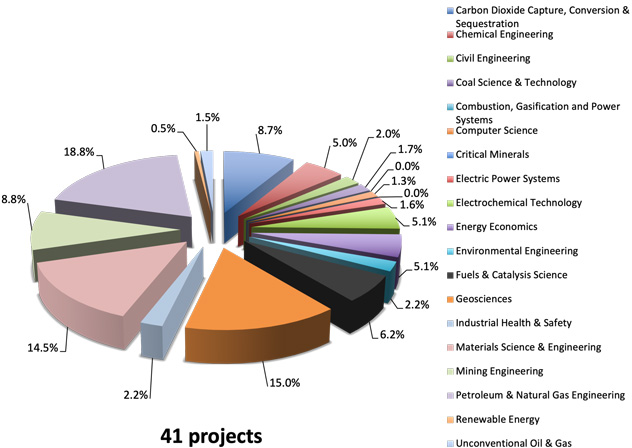
EMS Energy Institute Funding by Source
(Fiscal Year 2019/2020)
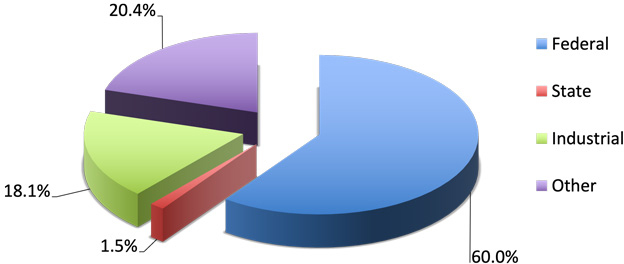
Total Funding $7.27 million
EMS Energy Institute Funding by Program Area
(Fiscal Year 2019/2020)
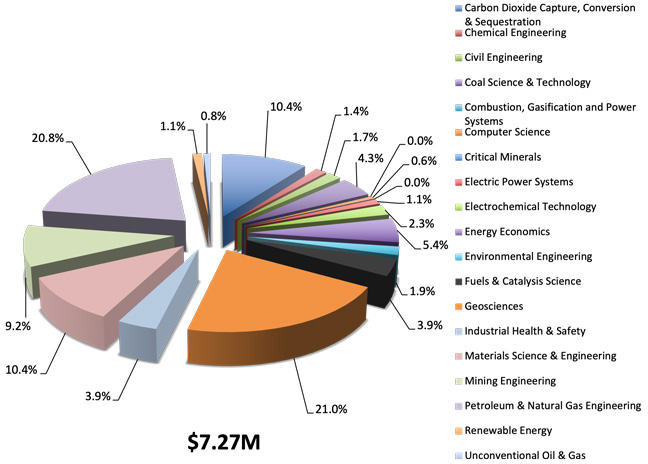
2021 Wilson Banquet and Awards PresentationThe College of Earth and Mineral Sciences’ annual celebration of accomplishments was hosted virtually on April 11, 2021. The following EI students, affiliates, and researchers were honored. | |
E. Willard and Ruby S. Miller | Charles Hosler Diversity, Equity and Inclusion Faculty AwardThis award honors faculty who have demonstrated exemplary leadership that manifests the ideals of diversity, equity, and inclusion into practical action in the College of Earth and Mineral Sciences.
|
Faculty Mentoring AwardThis award was created to honor faculty members in the college for their outstanding work in mentoring students or junior faculty members. The recipient is honored with a recognition memento and a monetary award.
| George H. Deike, Jr. Research GrantThe George H. Deike, Jr. Research Grant promotes innovative research of high scholarly merit. The award recipient receives $50,000 from the George H. Deike, Jr. Research Endowment Fund and a recognition memento.
|
Tenure
| |
2020 Wilson Banquet and Awards PresentationThe College of Earth and Mineral Sciences’ annual celebration of accomplishments was hosted virtually on April 26, 2020. The following EI students, affiliates, and researchers were honored. | |||
25-Year Service Award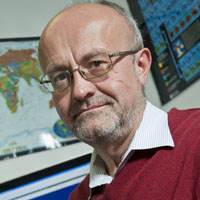 Serguei Lvov, professor of energy and mineral engineering | Gladys Snyder Junior Faculty GrantsThe Gladys Snyder Junior Faculty Grants are awarded to junior faculty for the development of new courses or the improvement of current offerings; for travel to professional meetings; to broaden the studies of junior faculty members; or to recognize significant contributions in research efforts.
| ||
Fall 2019 EMSAGE LaureatesThe College of Earth and Mineral Sciences Academy for Global Experience (EMSAGE) is the college’s signature undergraduate recognition program. Select students are recognized with the distinctive designation of EMSAGE Laureate.
| |||
Wilson Research Initiation GrantThe Wilson Research Initiation Grant was established to provide an extra spark to the research career of a junior faculty member.
| E. Willard and Ruby S. Miller | ||
Wilson Award for Outstanding Service
| |||
2020 Department of Energy and Mineral Engineering | ||||
Outstanding Graduate Teaching Assistants
| Graduate Teaching | |||
EME-PNGE Graduate | EME Graduate | MNGE Undergraduate | ||
2020 Institutes of Energy and the Environment | ||
Energy and Environmental Resilience“Bioinspired Self-Healing Cement for Sealing Well Leakage: Towards Sustainable Shale Gas Supply”
| Future Energy Supply“Coupled Large-scale Energy Conversion and Storage by Biphasic Redox Flow Battery and Photo-ionic Cells”
| Water“Granulation of Algal-Bacterial Consortia for enhanced CO2 capture and Resource Recovery”
|
2019 Wilson Banquet and Awards Presentation | |||
| |||
| |||
| |||
| |||
| |||
2019 Department of Energy and Mineral Engineering | |||||
C. C. Wright | Outstanding Graduate | ||||
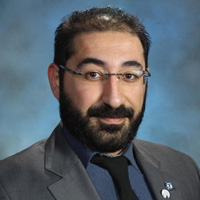 Behzad Vaziri Hassas, |  Lihe Xiu, |
Graduate Teaching Assistant
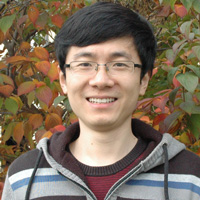
Jiehao Wang,
Ph.D. student
Student
Merit Awards
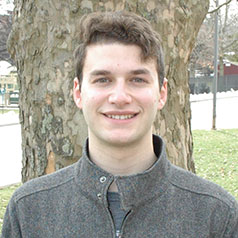 Ian W. Wasserman, ENENG | 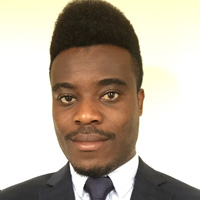 Mpila Nkiawete, ENENG |
EME-PNGE Graduate
Merit Award

Prakash Purswani,
Ph.D. student
ME Graduate
Merit Award
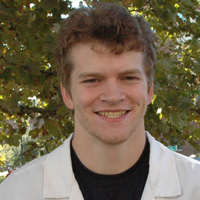
Timothy Duffy,
Ph.D. student
EME 2019 Photo Contest Winner
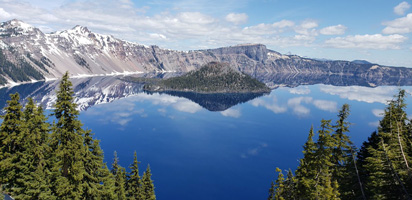
Taylor Young, undergraduate junior student
Third place winner – “Crater Lake”
2019 Staff 5-Year Awards | |||
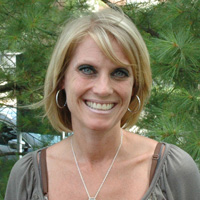 Christy English, | 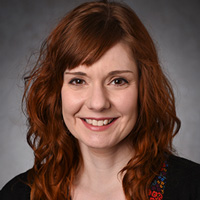 Jennifer Matthews, | ||
2019 Institutes of Energy and the Environment | |||
Future Energy Supply
| |||
Human Health and the Environment “The Role of Olfactory Neuron Death in Particulate Matter-Induced Neurodegeneration” — Patrick Drew, College of Engineering, and Randy Vander Wal, College of Earth and Mineral Sciences | Energy and Environmental Resilience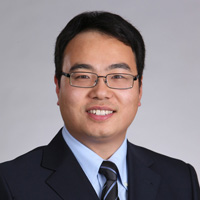 “Lighting Up the Subsurface for Tomorrow’s City: Initiating a Penn State DAS Array for Monitoring Geo/ Environmental Hazards” — Tieyuan Zhu, College of Earth and Mineral Sciences; Patrick Fox, College of Engineering; Andrew Nyblade, College of Earth and Mineral Sciences; and Eileen Martin, College of Science, Virginia Tech | ||
Food-Energy-Water Systems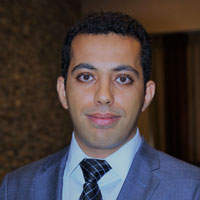 “Rare Earth Element Enrichment from Mining Wastewater Streams” — Xueyi Zhang, College of Engineering; Mohammad Rezaee, College of Earth and Mineral Sciences; and Michael Hickner, College of Earth and Mineral Sciences | High-Performance Building Systems
| ||
2019 Other Awards | |
 Meng Wang, assistant professor of environmental systems engineering, received funding provided by the University’s Wastewater Management Committee for her project, titled “Towards Energy Neutral Wastewater Treatment Plant by Enhanced Organic Carbon Capture and Mainstream Deammonification.” | 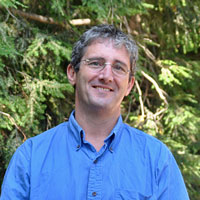 Chris Marone, professor of geosciences, was awarded a 2019 Penn State Multidisciplinary Seed Grant for his collaborative research with Jing Yang, assistant professor of electrical engineering, on “Machine Learning Approaches for Safe Geothermal Exploration.” |
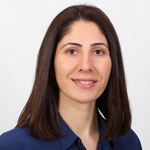 Hilal Ezgi Toraman, Penn State assistant professor of energy engineering and chemical engineering, has been named the Virginia S. and Philip L. Walker Jr. Faculty Fellow in Materials Science and Engineering and Fuel Science Program. The fellowship was awarded to Toraman for her contributions to teaching, research and service in the John and Willie Leone Family Department of Energy and Mineral Engineering. | |



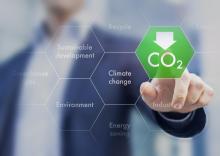
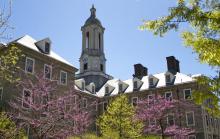
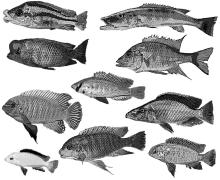
 An array of resonators glued on an aluminum plate.
An array of resonators glued on an aluminum plate.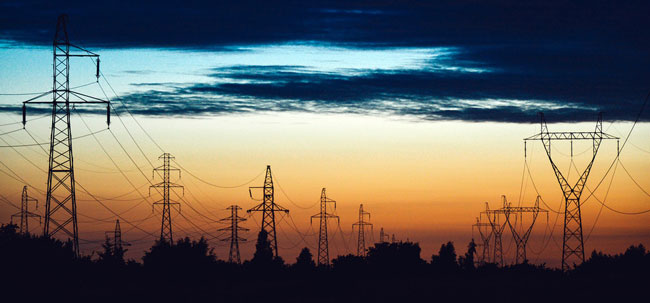 Image: Pixabay
Image: Pixabay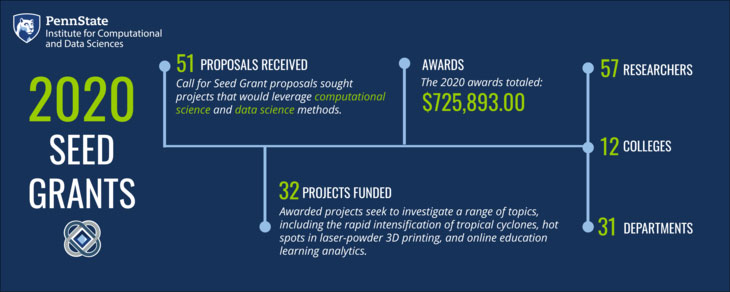 Image: Penn State Institute for Computational and Data Sciences
Image: Penn State Institute for Computational and Data Sciences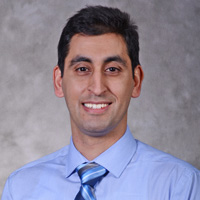 Hamid Emami-Meybodi, assistant professor of energy and mineral engineering, was selected for his proposal “Transport Behavior of Condensed Fluids in Ultratight Porous Media: Evidence for Mechanisms Other Than Advection”
Hamid Emami-Meybodi, assistant professor of energy and mineral engineering, was selected for his proposal “Transport Behavior of Condensed Fluids in Ultratight Porous Media: Evidence for Mechanisms Other Than Advection”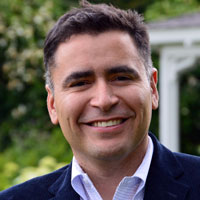 Luis Ayala, professor of petroleum and natural gas engineering
Luis Ayala, professor of petroleum and natural gas engineering Feifei Shi, assistant professor of energy engineering, was selected for her proposal “Unlocking Unconventional Lithium Resources through Development of Efficient, Low-cost, and Environmentally Benign Extraction Processes and Production of Lithium Battery Products”
Feifei Shi, assistant professor of energy engineering, was selected for her proposal “Unlocking Unconventional Lithium Resources through Development of Efficient, Low-cost, and Environmentally Benign Extraction Processes and Production of Lithium Battery Products”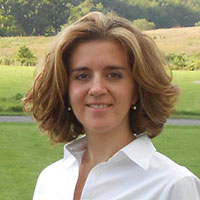 Chiara Lo Prete, associate professor of energy and mineral engineering
Chiara Lo Prete, associate professor of energy and mineral engineering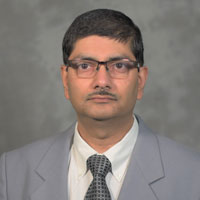 Sekhar Bhattacharyya, associate teaching professor, was selected for his proposal “Transforming Teaching Focus from Fossil Fuel to Mineral Resources used in Enduring Products and in Renewable Energy Sector”
Sekhar Bhattacharyya, associate teaching professor, was selected for his proposal “Transforming Teaching Focus from Fossil Fuel to Mineral Resources used in Enduring Products and in Renewable Energy Sector” Amin Mehrabian, assistant professor of petroleum and natural gas engineering, was selected for his proposal “Rate-Dependent Solutions for the Productivity and Injectivity Index of Deformable Subsurface Rock”
Amin Mehrabian, assistant professor of petroleum and natural gas engineering, was selected for his proposal “Rate-Dependent Solutions for the Productivity and Injectivity Index of Deformable Subsurface Rock”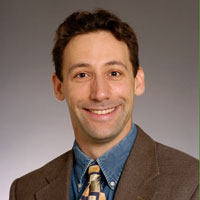
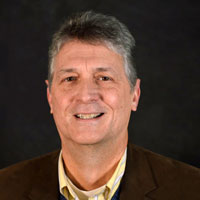
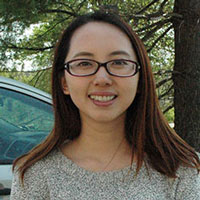
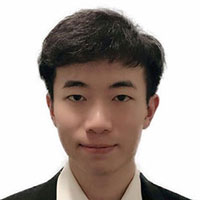
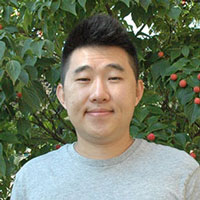
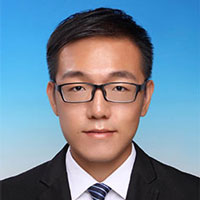

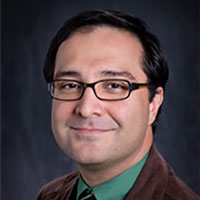
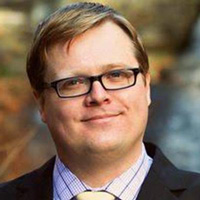 Gladys Snyder Junior Faculty Grants
Gladys Snyder Junior Faculty Grants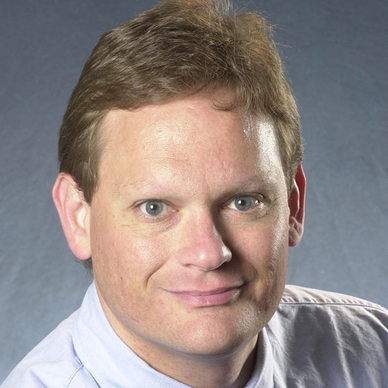 John T. Ryan, Jr. Faculty Fellowship
John T. Ryan, Jr. Faculty Fellowship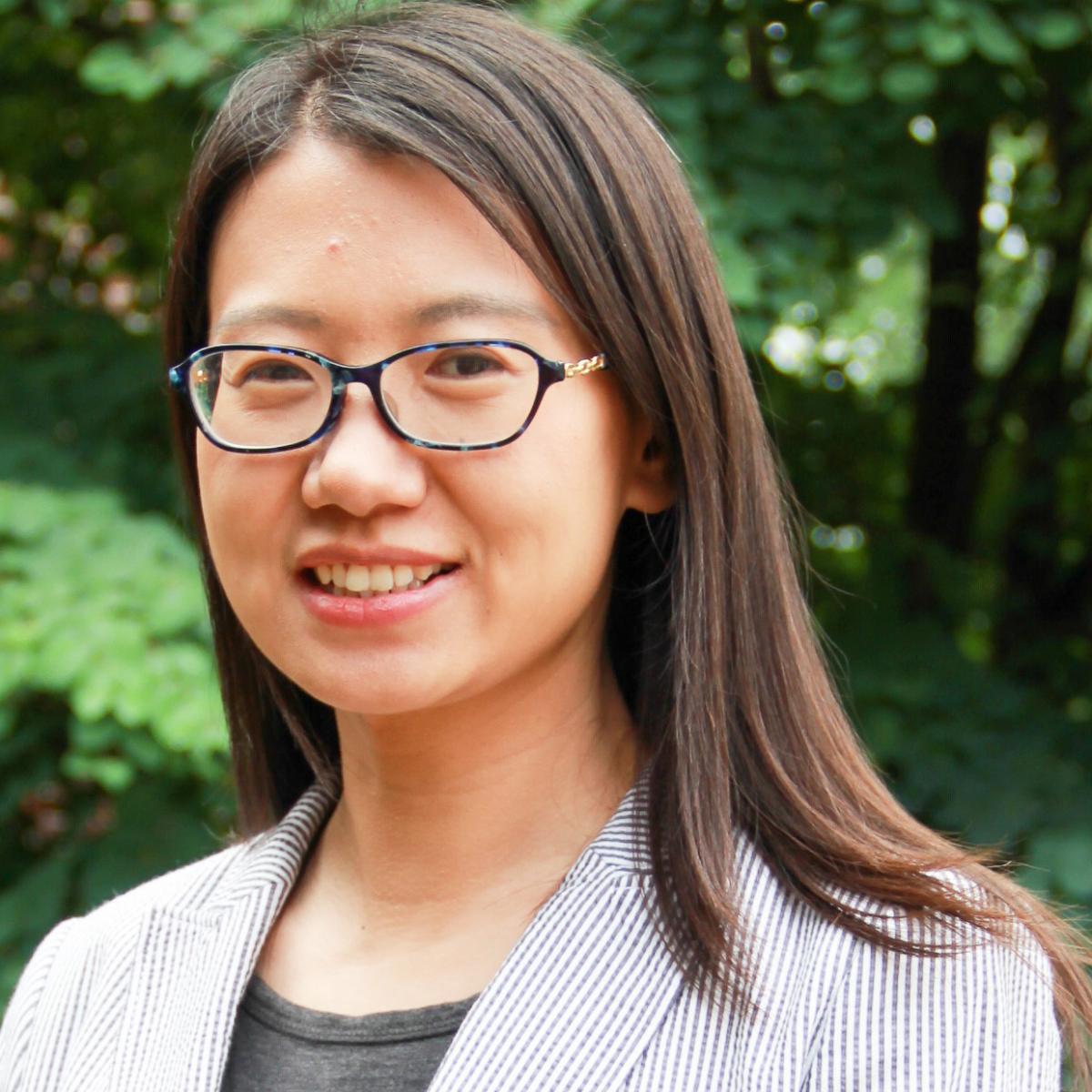 E. Willard and Ruby S. Miller Faculty Fellowship
E. Willard and Ruby S. Miller Faculty Fellowship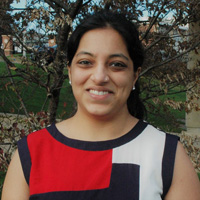
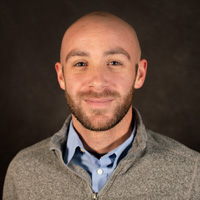 “Increasing Power Densities and Cycle Efficiencies of Novel, Thermally-Charged Flow Batteries Using Advanced Flow Cell Topologies” — Matthew Rau, College of Engineering; Serguei Lvov (left), College of Earth and Mineral Sciences; Derek Hall (right), College of Earth and Mineral Sciences; and Bruce Logan, College of Engineering
“Increasing Power Densities and Cycle Efficiencies of Novel, Thermally-Charged Flow Batteries Using Advanced Flow Cell Topologies” — Matthew Rau, College of Engineering; Serguei Lvov (left), College of Earth and Mineral Sciences; Derek Hall (right), College of Earth and Mineral Sciences; and Bruce Logan, College of Engineering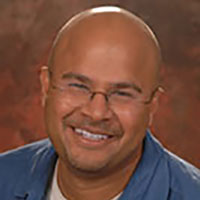
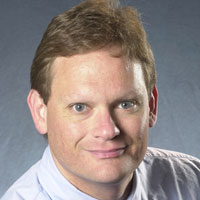 “Uncertainty-Aware Transactive Building Controls” — Gregory Pavlak, College of Engineering; Uday Shanbhag (left), College of Engineering; and Mort Webster (right), College of Earth and Mineral Sciences
“Uncertainty-Aware Transactive Building Controls” — Gregory Pavlak, College of Engineering; Uday Shanbhag (left), College of Engineering; and Mort Webster (right), College of Earth and Mineral Sciences